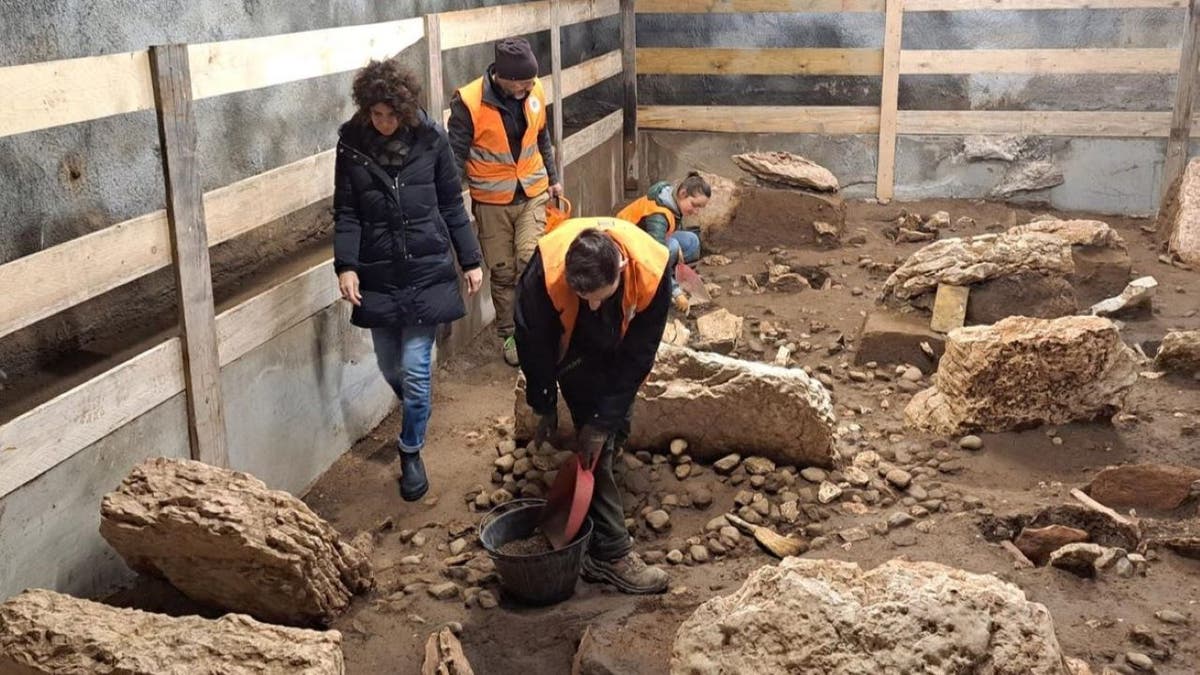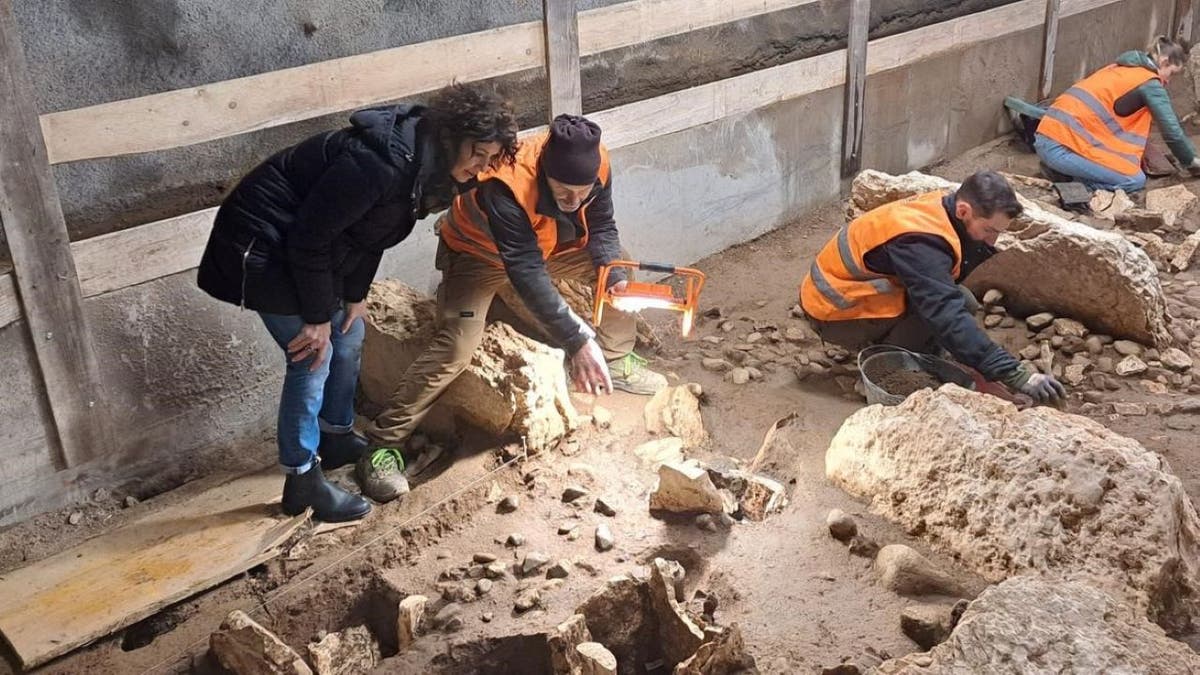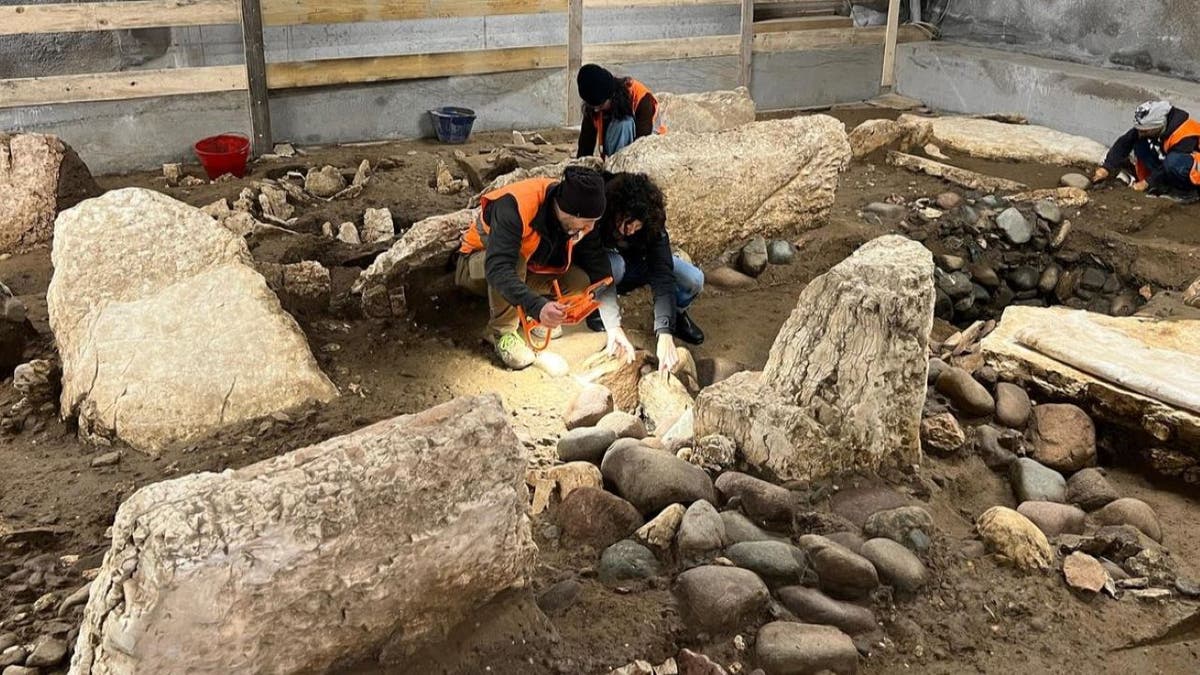Ancient necropolis uncovered by archaeologists in Trento, Italy

Archaeologists just lately found an historical “city of the dead” in Italy, courting again almost 3,000 years.
The Italian province of Trentino mentioned in a information launch {that a} “monumental necropolis” from the Iron Age was discovered in town of Trento. It dates again to the ninth century B.C. and was used by means of the sixth century B.C.
Trento sits on the Adige River in northern Italy, close to the Italian Alps. The necropolis was developed at a time when “a wide bed of the Fersina stream [basin] crossed by a network of torrential canals that intertwined with each other, separated by temporary sandy or gravelly bars,” the discharge, translated from Italian to English, described.
“The funerary context was likely situated between two channels that could be activated in the event of flooding,” the translated assertion defined. “The flooding episodes, which began during the phases of the necropolis’s use, sealed the ancient archaeological stratification, allowing for the exceptional preservation of the funerary context.”
PLUMBER STUMBLES ACROSS HOARD OF ANCIENT COINS IN FIELD: ‘ONCE IN A LIFETIME FIND’
Excavators just lately discovered an Iron Age necropolis stuffed with well-preserved bones and artifacts. (Autonomous Province of Trento Press Office)
Various floods deposited soil that allowed the necropolis to outlive over the centuries. Officials say that the location has been “perfectly preserved” due to the floods.
“This circumstance has made it possible to document in detail the usage plans of the necropolis and to accurately reconstruct the funerary practices of the community that occupied this area during the early Iron Age,” the assertion learn.
ANCIENT ROMAN HELMET TURNS UP IN UNUSUAL LOCATION: ‘EXCEPTIONALLY RARE’

The necropolis dates again to the ninth century B.C. and was used by means of the sixth century B.C. (Autonomous Province of Trento Press Office)
Researchers say {that a} foremost attribute of the necropolis are its a number of funerary steels, which have been stone slabs used in the traditional world as monuments. The steles have been positioned vertically as markers, and “organized in subparallel rows with a main north-south orientation,” in response to the assertion.
“Each stele marks the western boundary of the main tomb, which is a stone casket covered by a tumulus [mound] structure, around which a dense concentration of satellite tombs developed over time,” the press launch described.
For extra Lifestyle articles, go to foxnews.com/life-style

Archaeologists say that the excavation poses questions in regards to the pre-Roman inhabitants of Trento. (Autonomous Province of Trento Press Office)
Archaeologists additionally discovered loads of artifacts, together with steel artifacts similar to weapons and decorative objects. The decorative objects even had amber and glass paste insertions, which “attest to the existence of influences and close cultural relations with Italian environments,” in response to officers.
Excavators additionally discovered “cremation soil” and calcined bones, which have been “within containers made of perishable materials” that will have as soon as been wood caskets.
“It is hypothesized that the burnt remains, often placed above the personal grave goods, were wrapped in a fabric, of which fibers have been preserved in some cases, closed with the help of pins or fibulae [brooches],” the assertion learn. “In some tombs, the shape of the accumulation suggests the presence of quadrangular wooden caskets.”
CLICK HERE TO SIGN UP FOR OUR LIFESTYLE NEWSLETTER

Various floods deposited soil that allowed the necropolis to outlive. (Autonomous Province of Trento Press Office)
“The funerary goods uncovered are particularly rich and serve as indicators to define the identity, roles, and functions of the social group to which they belonged.”
Officials mentioned that the invention “will allow us to rewrite the history of the city,” and are already grappling with the historic questions the discoveries pose.
CLICK HERE TO GET THE FOX NEWS APP
“[This] raises complex and complex problems regarding the methods of self-representation in the funerary context of the social group to which, at the moment, the settlement context remains unknown.”





